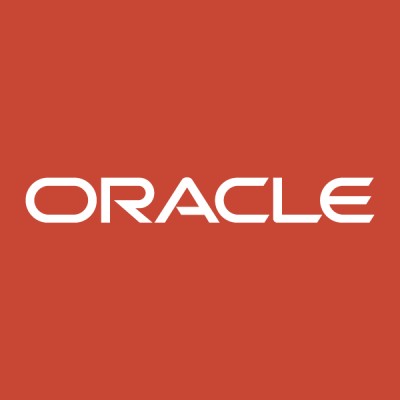The Rise of Python: A Gateway for Beginners
September 7, 2024, 4:48 am
In the digital age, programming is the new literacy. Python stands at the forefront, a language that opens doors. Its simplicity is like a gentle breeze, inviting newcomers to explore the vast landscape of coding. The book "Let’s Talk Python: Software Development for Beginners" serves as a compass for those embarking on this journey.
This book is tailored for anyone eager to learn Python, regardless of age. It’s a treasure trove for self-learners. Programming is an adventure filled with challenges, victories, and lessons. In this narrative, readers join Eric and Simon, two aspiring programmers, as they navigate the waters of Python. They don’t just learn to code; they create their first application, a practical experience that resonates with real-world scenarios.
The journey begins with the creation of a coffee shop application. This project is not just about writing code; it’s about understanding the process. Readers will learn to design an online menu, manage orders, and store data in a database. Each chapter unfolds like a new layer of an onion, revealing essential skills such as planning application structure, debugging, and user expectation management.
The book emphasizes the importance of asking questions and making mistakes. These are not setbacks; they are stepping stones. Just like in life, coding requires experimentation. Readers will engage in unique practical tasks that push them beyond the limits of traditional beginner books.
Pavel Anni, the author, is a seasoned engineer with a passion for teaching. His experience spans across major tech companies, and his goal is clear: to demystify technology for everyone. He crafts lessons that are not only informative but also engaging. The book is a bridge between theory and practice, guiding readers through the complexities of programming with ease.
One of the standout features of this book is its focus on JSON, a data format that is crucial for modern applications. Readers will learn how to store structured data, a skill that is invaluable in today’s data-driven world. The dialogue between Eric and Simon serves as a relatable guide, making complex concepts accessible. They discuss how to save orders in a structured format, reinforcing the idea that coding is not just about syntax; it’s about logic and structure.
The book doesn’t shy away from the technical aspects. It introduces readers to file operations, explaining how to open, write, and close files in Python. This knowledge is essential for any programmer. The author breaks down these concepts into digestible pieces, ensuring that readers can follow along without feeling overwhelmed.
Moreover, the narrative encourages collaboration. Eric learns about modules and how sharing code can enhance productivity. This reflects the spirit of the programming community, where knowledge is shared freely. The book emphasizes that programming is not a solitary endeavor; it thrives on collaboration and open-source contributions.
As readers progress, they will find themselves equipped with practical skills. They will learn to create a professional-looking web application, a feat that many beginners aspire to achieve. The hands-on approach ensures that the knowledge gained is not just theoretical but applicable in real-world scenarios.
The book also highlights the importance of user experience. Understanding user needs is crucial for any application. Readers will learn to manage expectations and design applications that are user-friendly. This focus on the end-user sets this book apart from others, making it a comprehensive guide for aspiring developers.
In addition to the technical skills, the book fosters a mindset of resilience. Programming is often fraught with challenges. The ability to troubleshoot and adapt is vital. Readers are encouraged to embrace failures as part of the learning process. This perspective is refreshing and essential for anyone entering the tech field.
The practical exercises at the end of each chapter serve as a testing ground for newly acquired skills. Readers are prompted to create their own JSON files, reinforcing the concepts learned. This hands-on practice is crucial for retention and understanding.
In a world where technology is ever-evolving, learning Python is a strategic move. It’s a language that is not only powerful but also versatile. From web development to data analysis, Python opens doors to various career paths. The book "Let’s Talk Python" is a stepping stone into this exciting realm.
As the tech landscape continues to shift, initiatives like the Astra DevConf 2024 highlight the importance of community and collaboration in development. Events like these foster connections among developers, encouraging knowledge sharing and innovation. They serve as a reminder that learning is a continuous journey, one that thrives on interaction and shared experiences.
In conclusion, "Let’s Talk Python" is more than just a book; it’s an invitation to explore the world of programming. It equips readers with the tools they need to succeed. With its engaging narrative and practical approach, it demystifies coding, making it accessible to all. Whether you’re a student, a professional looking to upskill, or simply curious, this book is your gateway to the future. Embrace the adventure, and let Python be your guide.
This book is tailored for anyone eager to learn Python, regardless of age. It’s a treasure trove for self-learners. Programming is an adventure filled with challenges, victories, and lessons. In this narrative, readers join Eric and Simon, two aspiring programmers, as they navigate the waters of Python. They don’t just learn to code; they create their first application, a practical experience that resonates with real-world scenarios.
The journey begins with the creation of a coffee shop application. This project is not just about writing code; it’s about understanding the process. Readers will learn to design an online menu, manage orders, and store data in a database. Each chapter unfolds like a new layer of an onion, revealing essential skills such as planning application structure, debugging, and user expectation management.
The book emphasizes the importance of asking questions and making mistakes. These are not setbacks; they are stepping stones. Just like in life, coding requires experimentation. Readers will engage in unique practical tasks that push them beyond the limits of traditional beginner books.
Pavel Anni, the author, is a seasoned engineer with a passion for teaching. His experience spans across major tech companies, and his goal is clear: to demystify technology for everyone. He crafts lessons that are not only informative but also engaging. The book is a bridge between theory and practice, guiding readers through the complexities of programming with ease.
One of the standout features of this book is its focus on JSON, a data format that is crucial for modern applications. Readers will learn how to store structured data, a skill that is invaluable in today’s data-driven world. The dialogue between Eric and Simon serves as a relatable guide, making complex concepts accessible. They discuss how to save orders in a structured format, reinforcing the idea that coding is not just about syntax; it’s about logic and structure.
The book doesn’t shy away from the technical aspects. It introduces readers to file operations, explaining how to open, write, and close files in Python. This knowledge is essential for any programmer. The author breaks down these concepts into digestible pieces, ensuring that readers can follow along without feeling overwhelmed.
Moreover, the narrative encourages collaboration. Eric learns about modules and how sharing code can enhance productivity. This reflects the spirit of the programming community, where knowledge is shared freely. The book emphasizes that programming is not a solitary endeavor; it thrives on collaboration and open-source contributions.
As readers progress, they will find themselves equipped with practical skills. They will learn to create a professional-looking web application, a feat that many beginners aspire to achieve. The hands-on approach ensures that the knowledge gained is not just theoretical but applicable in real-world scenarios.
The book also highlights the importance of user experience. Understanding user needs is crucial for any application. Readers will learn to manage expectations and design applications that are user-friendly. This focus on the end-user sets this book apart from others, making it a comprehensive guide for aspiring developers.
In addition to the technical skills, the book fosters a mindset of resilience. Programming is often fraught with challenges. The ability to troubleshoot and adapt is vital. Readers are encouraged to embrace failures as part of the learning process. This perspective is refreshing and essential for anyone entering the tech field.
The practical exercises at the end of each chapter serve as a testing ground for newly acquired skills. Readers are prompted to create their own JSON files, reinforcing the concepts learned. This hands-on practice is crucial for retention and understanding.
In a world where technology is ever-evolving, learning Python is a strategic move. It’s a language that is not only powerful but also versatile. From web development to data analysis, Python opens doors to various career paths. The book "Let’s Talk Python" is a stepping stone into this exciting realm.
As the tech landscape continues to shift, initiatives like the Astra DevConf 2024 highlight the importance of community and collaboration in development. Events like these foster connections among developers, encouraging knowledge sharing and innovation. They serve as a reminder that learning is a continuous journey, one that thrives on interaction and shared experiences.
In conclusion, "Let’s Talk Python" is more than just a book; it’s an invitation to explore the world of programming. It equips readers with the tools they need to succeed. With its engaging narrative and practical approach, it demystifies coding, making it accessible to all. Whether you’re a student, a professional looking to upskill, or simply curious, this book is your gateway to the future. Embrace the adventure, and let Python be your guide.

